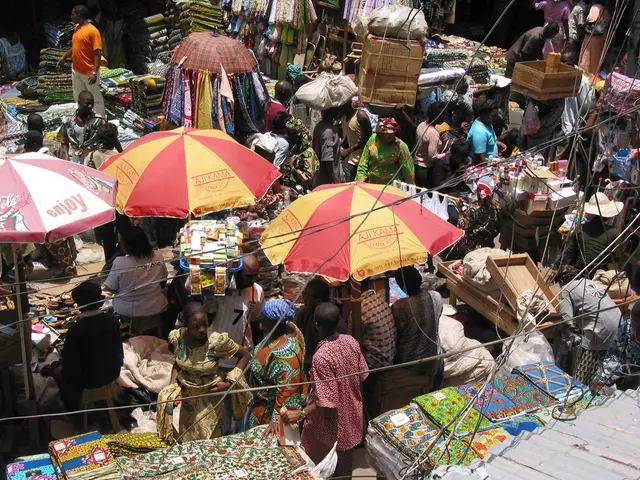Decrease in Latvia's Export Figures Observed in June
Latvia's foreign trade turnover in the first six months of 2025 reached a significant milestone, totalling EUR 21.06 billion. However, a closer look at the data reveals a concerning trend: the foreign trade balance worsened compared to the same period in 2024, with a trade deficit that expanded due to faster growth in imports than exports.
In the first quarter of 2025, total foreign trade turnover rose by 5.5%, with exports increasing by 1.9% to EUR 4.92 billion and imports rising by 8.9% to EUR 5.58 billion. This trend continued into the second quarter, with data for May and June showing steady increases in imports outpacing exports.
In June 2025, the value of exported goods decreased by 0.7% month-on-month, while the value of imported goods increased by 5.4%. As a result, the trade deficit widened, reaching EUR 464.4 million in June 2025, a significant increase from EUR 222.7 million in June 2024.
The major traded goods include mineral fuels, vehicles, electrical equipment, and pharmaceuticals. The Baltic neighbours, Lithuania, Estonia, and Germany, as well as Poland, emerged as key trading partners. Lithuania was the largest destination for goods exported from Latvia in June 2025, with a share of 19.7%, followed by Estonia with 12.4%. Germany was the third largest destination, with a share of 7.1%, and the United Kingdom came fourth with a share of 5.9%.
On the import side, Lithuania was the leading trading partner in June 2025, with a share of 20.9%, followed by Germany with 12.1%, Poland with 11.5%, and Estonia with 8.4%.
Despite the widening trade deficit, Latvia had a surplus trade balance with 111 countries and a deficit trade balance with 58 countries in June 2025. The total foreign trade turnover in the first six months of 2025 was EUR 1194.9 million, a 6% increase compared to the corresponding period of 2024. The value of imported goods in the first six months of 2025 was EUR 11.34 billion, an increase of 7.9% compared to the same period in 2024, while the value of exported goods was EUR 9.72 billion, a 3.9% increase.
It is important to note that the foreign trade statistics for goods are presented at actual prices and calculated based on the goods value in euro, not the physical amount or quantity.
In conclusion, while Latvia's foreign trade turnover is increasing, the deteriorating balance is a cause for concern. Efforts to address this issue and promote a more balanced trade relationship will be crucial for the country's economic stability and growth in the coming months.
In the context of Latvia's economic growth, the EU industry sector plays a significant role in the expanded foreign trade turnover, contributing to the exports of mineral fuels, vehicles, electrical equipment, and pharmaceuticals. Furthermore, given the increasing trade deficit, it is crucial for the finance sector to assist in balancing trade, perhaps by supporting the local industries to boost exports and reduce the rapid growth of imports for sustainable economic stability and growth.




